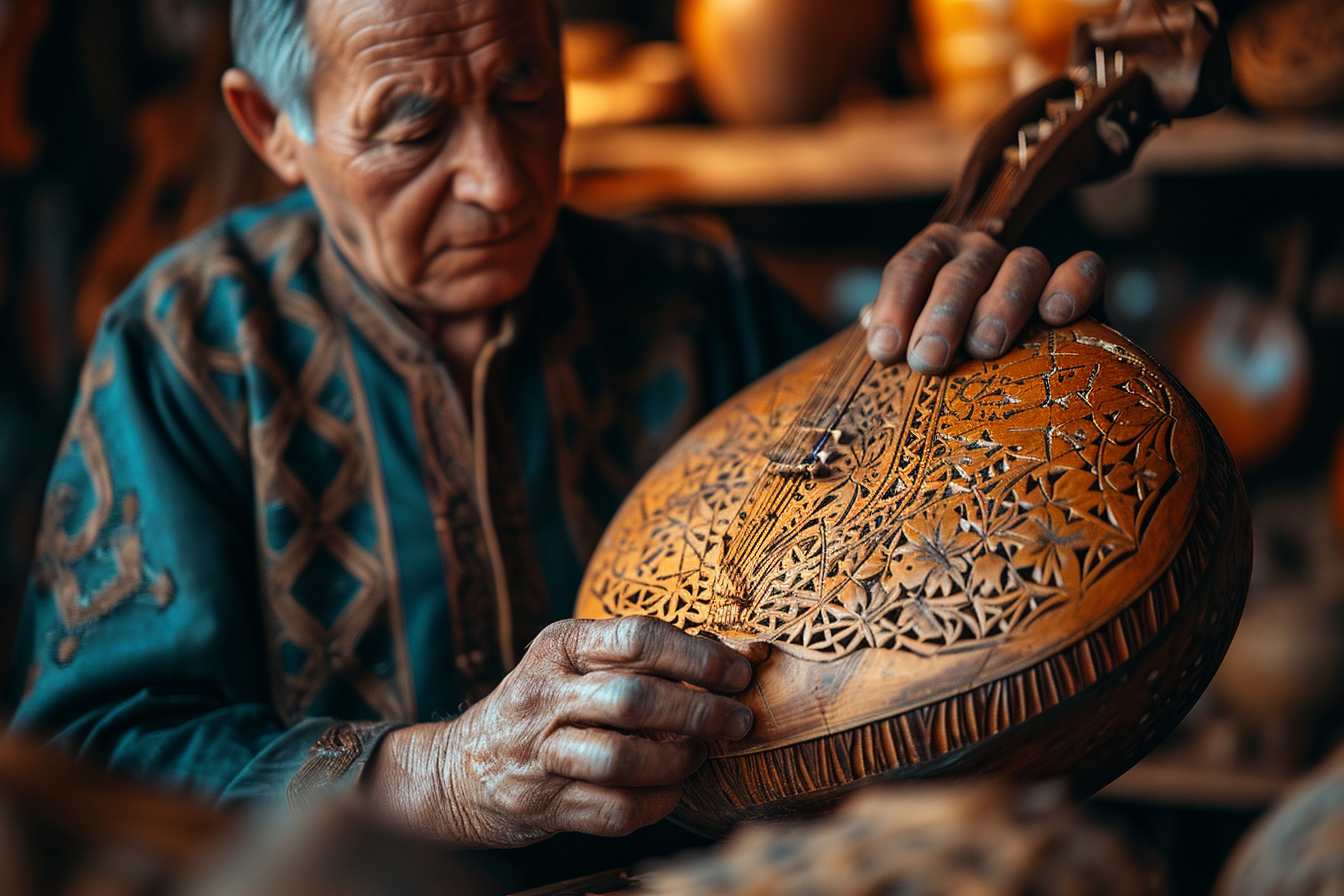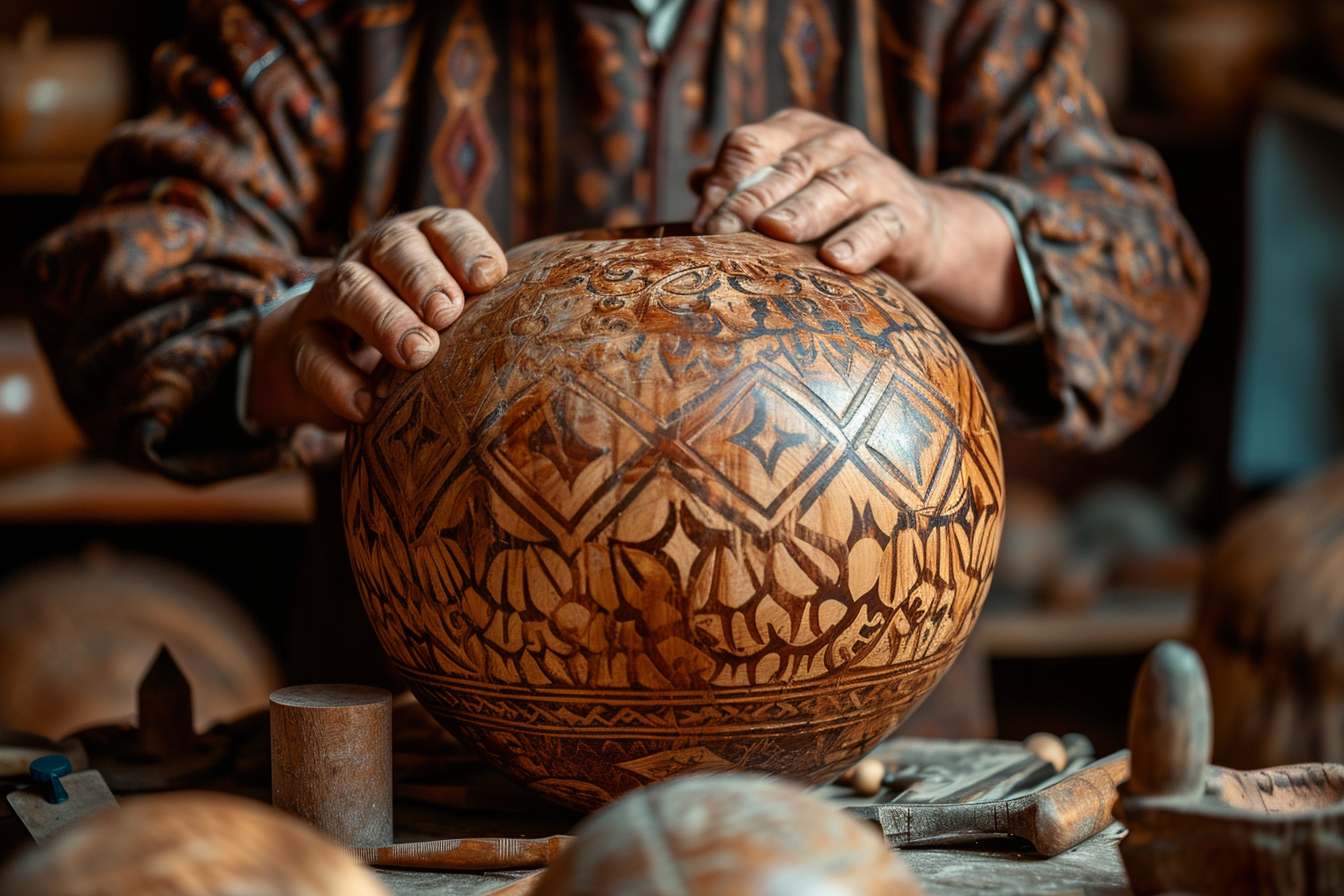The dombra is more than just a musical instrument; it is a cultural symbol with deep-rooted significance in countries like Kazakhstan and surrounding regions. Characterized by its long neck and two strings, the dombra produces melodies that resonate with the traditional music of the Central Asian steppes. For musicians and enthusiasts aiming to master this instrument, selecting the appropriate dombra is a crucial step that can substantially impact the authenticity and quality of the musical experience.
The dombra’s heritage
Exploring the dombra’s history unveils its importance in folklore, national identity, and storytelling. Traditionally used by bards and poets, called "akyns", this instrument served as a companion in their tales and epics. Understanding this lineage is vital to appreciate the nuances and significance of each dombra.
Key considerations when choosing a dombra
Craftsmanship and materials
The construction of a dombra is a meticulous process, with craftsmen often passing down techniques through generations. The choice of wood is paramount, as it dictates the sound quality, durability, and visual appeal of the instrument. Common woods used include spruce, pine, and various hardwoods. The resonating body, the neck, and the pegbox must harmonize in terms of material choice to create a dombra that not only plays well but also withstands the test of time.
Acoustic properties
Sound production is the essence of any musical instrument, and for the dombra, this is a factor heavily influenced by its shape and string tension. The body’s shape, whether bowl-like or slightly flattened, affects the resonance and projection. Additionally, the tension of the strings, determined by the tuning pegs’ quality and the bridge’s placement, impacts the instrument’s tonal clarity.
Craftsmanship and artistry
Handcrafted dombra instruments often bear the mark of their maker’s artistry, which can be seen in intricate carvings, inlays, and paintwork. The aesthetic dimension matters to many players, as it reflects the traditional art forms and personal identity of the musician. Artistic embellishments, although secondary to sound quality, can create an emotional connection between the player and the instrument.
Size and playability
The dombra comes in various sizes, and selecting the right size is critical for comfortable playing. Full-size instruments suit most adults, while smaller versions are available for younger enthusiasts. The action, or the distance between the strings and the fretboard, also affects playability. A low action reduces hand fatigue during long practice sessions, but if it’s too low, it can create a buzzing sound.
Customization options
Serious players might consider custom-built options, where every aspect of the dombra, from the wood’s age and type to the string configuration, can be tailored. Custom dombra makers often offer consultations to ensure that the end product is finely attuned to the musician’s needs.
Cultural authenticity in dombra music
For those striving to produce genuine dombra music, understanding regional variations is crucial. Different styles exist, with some focused on rhythm and others on intricate melodies. Selecting a dombra that supports the desired style ensures that the musician can fully express the traditional nuances of their chosen repertoire.
The kazakh dombra
In Kazakhstan, the dombra’s music is often categorized into two primary styles: tolgau and syrnai. Tolgau is lyrical and expressive, often slower and connected to storytelling, while syrnai is rhythmic and lively, designed to incite dancing. A broader body is typically associated with tolgau for a more resonant, deep sound, whereas syrnai favors a brighter tone, often provided by a smaller, more curved body.
Beyond kazakhstan
Though the dombra is synonymous with Kazakh musical tradition, variations exist in other Central Asian cultures. Each regional version has its unique characteristics, and these must be considered when selecting an instrument. For instance, the Dombira, a close relative of the Kazakh dombra, is found in Uzbekistan and Kyrgyzstan. It often boasts a longer neck and a different tuning, which results in diverse musical possibilities.
Maintenance and upkeep
Owning a dombra means committing to its care. The instrument is susceptible to temperature and humidity fluctuations. Proper maintenance includes regular tuning, cleaning, and storage in a case that protects it from the elements. Just as a dombra can last a lifetime with good care, negligence can quickly lead to deterioration in both appearance and sound quality.
Tuning and string replacement
Proper tuning is not only about creating good sound; it’s also crucial for the dombra’s longevity. Over-tensioned strings can stress the instrument, while loose strings diminish sound quality. String quality varies, and finding the right strings involves a balance of tone, durability, and playability. When they show signs of wear or start to lose their tone, it is essential to replace them promptly.
Humidity and temperature
To preserve the wood’s integrity, players must shield their dombra from extreme humidity and temperature shifts. Too much humidity can swell the wood, while dry conditions can lead to cracks. Using a humidifier or dehumidifier can help maintain a steady environment, especially in climates that experience broad seasonal changes.
Regular cleaning
Keeping a dombra free of dust and grime not only maintains its appearance but also preserves its acoustic properties. Using a soft, dry cloth for the body and a slightly damp one for the strings will usually suffice. Harsh chemicals or abrasive materials must be avoided to prevent damaging the wood or the finish.
Where to purchase a dombra

Purchasing a dombra can be an adventure in itself, as it involves a choice between local artisans, specialized music stores, or even international sellers. Each of these sources has advantages and considerations to weigh.
Local artisans
Buying directly from a local artisan not only supports traditional craftsmanship but can also offer a level of customization and connection to the cultural roots of the dombra. Engaging with the maker allows for a deeper understanding of the instrument and potentially a more perfect match for the musician’s needs.
Specialized music stores
Music stores that specialize in folk instruments can be an excellent place to start, especially for those new to the dombra. Staff should be knowledgeable and able to guide beginners or intermediate players through the selection process, providing options that align with their skill level and musical aspirations.
Online retailers and marketplaces
For those in regions where dombra is less common, the internet opens up a worldwide market. While this means access to a wider range of instruments, it also requires caution. Buyers should research sellers thoroughly, read reviews, and, if possible, request audio samples of the dombra being played to assess its sound quality before committing to a purchase.
Final considerations in the selection process

When every string vibrates with the breath of centuries-old tradition, the choice of a dombra transcends mere musical preference; it becomes a matter of cultural immersion and personal expression. Potential owners should not rush the decision but allow time for research, exploration, and, if possible, hands-on trials. Engaging with dombra communities, both online and in-person, can offer invaluable insights and recommendations, making the journey to mastery a shared experience.
In the realm of traditional music, authenticity lies not only in the instrument but in the player’s connection to it and to the history it carries. Selecting the right dombra opens the door to a rich tapestry of cultural heritage, and with thoughtful consideration, the resulting harmony between musician and instrument can illuminate the path to authentic, soul-stirring performance. As each dombra has its own voice, the search for the perfect one could be as rewarding as the music it produces, allowing the player to resonate not just with strings, but with the very heart of a musical tradition.
Remember, the journey to mastering the dombra is a mosaic of encounters—between the player, the instrument, and the music that has traversed time and borders. Each decision along the way shapes the soundscape of tomorrow and weaves the individual’s story into the enduring legacy of this ancient art form.

Leave a Reply